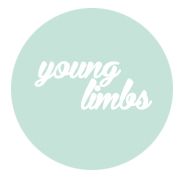My Youtube video focuses on sexting and pornographic material and the issue of trying to adapt the law to encompass new digital technology as well as ensuring proper security for important data online. I discuss this in relation to the recent celebrity nude photo scandal that occurred at the beginning of September. To create this text, I adopted my previously acquired knowledge about the celebrity nude photo scandal in conjunction with scholarly research and news articles to create a well rounded text. I tried to liken my video to other topical based channels such as Last Week Tonight with John Oliver.
Prior to filming, I sat down and decided what I wanted to say about my topic. I sourced public opinion examples from Twitter accounts and comments from online websites such a Reddit, however these didn’t end up in the final cut of my video. I then began viewing other people’s Youtube videos that contained a similar style to what I was hoping to achieve with my video for inspiration. Some of these accounts included Last Week Tonight with John Oliver, Feminist Frequency, VlogBrothers, CrashCourse and Marques Brownlee. These channels didn’t particularly cover the type of content I was planning to discuss in my video, but their presentation and editing was inspiring to me for someone who has never really edited or created a vlogging style Youtube video before. I used my digital SLR to capture my video as it has HD video capabilities; something I’ve found to be very important for Youtube videos. Although I didn’t have access to a microphone, I knew that the built-in audio mic on my camera was capable enough to capture my voice, compared to using my computer for audio. I utilised a tripod to keep the camera stabilised. After recording my vlog, I imported the video clips into iMovie and began to edit my video. I created images in Photoshop to indicate the different sections of my video and to display any quotations that I used. I used these images, along with my various video clips to cut down and edit my film to fit the required time as best as I could.
I used my required readings as a base for initially exploring my themes further as well as a basis for finding potential sources. The scholarly resources that I used in my video, help to explain the law and our obsession, as a society, with celebrity culture. As the example I was using was primarily a news story, I felt that it was also important to include a source from a newspaper article. I chose The Guardian because of its reputation with providing a very balanced and unbiased view on all news whilst also covering topics extremely in depth and from a variety of angles. I also included a reference to the website, Buzzfeed as most other news articles referred back to the Buzzfeed website, so I thought best to utilise the source of the information.
One thing I now know for certain is that it is extremely difficult to make a Youtube video. I had to dramatically cut back my video, resulting in a very blunt ending. In hindsight, I should have made a contingency with the information I wanted to cover, coming up with an alternative ending and utilising my information differently to wrap up my video nicely. My biggest challenge by far was my fear of being in front of the camera rather than behind it as well as having to edit my face and voice for hours on end.
References:
Gay, R 2014, 'The Great 2014 Celebrity Nude Photos Leak is only the beginning', The Guardian, 4 September 2014, p.1, retrieved 5th September 2014, <http://www.theguardian.com/commentisfree/2014/sep/01/celebrity-naked-photo-leak-2014-nude-women >.
Mercer, J 2013, ‘Introduction: sex and the celebrity, Celebrity Studies’, vol. 4, no. 1, pp. 1–3, DOI: 10.1080/19392397.2013.750086.
Muneramiley 2014, ‘My One Year Of Being A Devoted Miley Cyrus Fan', Untitled, Tumblr, 19 June, retrieved 7 September 2014, <http://muneramiley.tumblr.com/post/89296308683/my-1-year-of-being-a-devoted-miley-cyrus-fan >.
Parliament Victoria 2013, ‘Inquiry into Sexting', Law Reform Committee, retrieved 5th September 2014, <http://www.parliament.vic.gov.au/file_uploads/LRC_Sexting_Final_Report_0c0rvqP5.pdf/>.
Zarrell, R 2014, 'Jennifer Lawrence, Victoria Justice, Other Celebs Victims Of More Leaks, Apple Denies Breach.', Buzzfeed, 1 September 2014, p.1, retrieved 5th September 2014, <http://www.buzzfeed.com/rachelzarrell/jennifer-lawrence-ariana-grande-picture-leak#4bu6pkc>.







